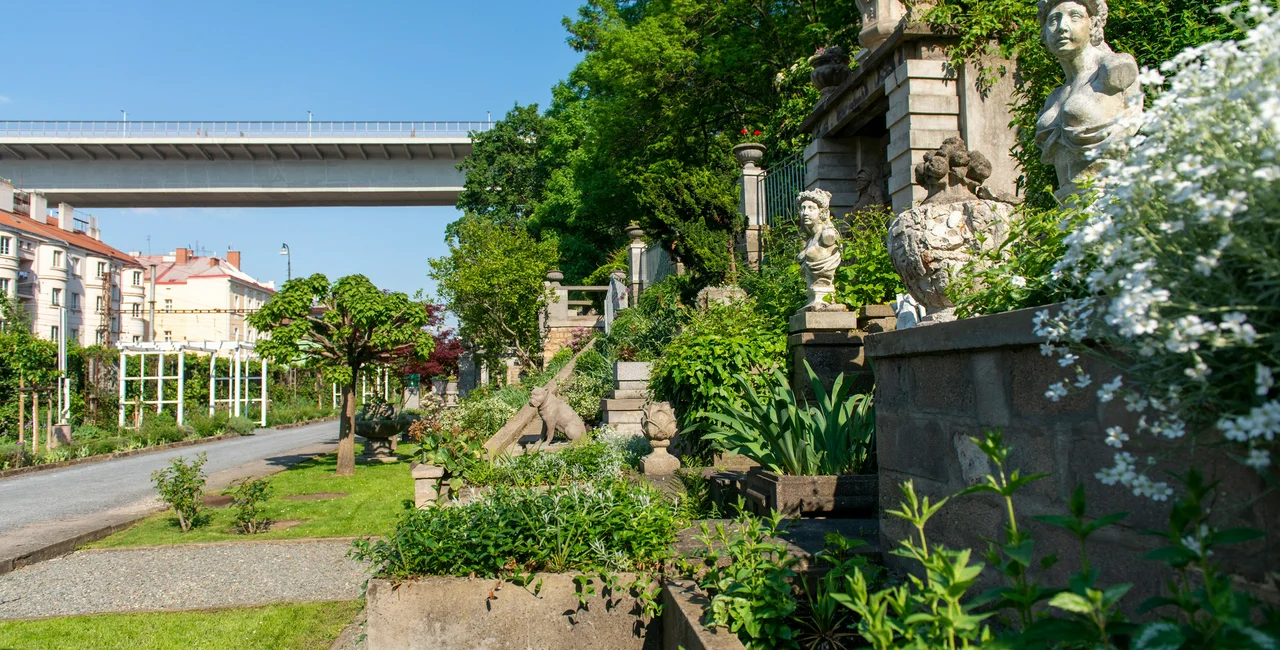Beneath the iconic Nusle Bridge in Prague's Vyšehrad neighborhood lies a hidden gem that even most locals don't know about: the historic Art Garden (Umělecká zahrada), a serene oasis filled with sculptures, busts, reliefs, and other artistic works.
This unique garden, created a hundred years ago around a thriving art studio that produced sculptures, remains unknown to many but is now celebrating its storied history with a new exhibition. The location is open every Wednesday and Saturday from 10:00 a.m. to 4:00 p.m. through the end of October.
PARTNER ARTICLE
The garden's story began in 1924 when Karel Novák, a sculptor from the First Republic, established a workshop on a narrow plot along the railway line. Novák's studio not only produced his own works but also served as a creative hub for other prominent artists of the era, crafting models for significant figurative designs.
Notable projects created at the studio include the Vltava Statue at Dětské ostrov in Smíchov and Prague's Monument to its Victorious Sons at Náměstí Pod Emauzy. The workshop also contributed to iconic pieces of Prague art like the Jan Hus monument in Old Town Square and the Jan Žižka statue atop Vítkov Hill.
In the early 1950s, the sculpture factory was nationalized, and the premises became part of the Krátký Film Praha company. This site was instrumental in producing beloved animated shorts under director Břetislav Pojar, including classics like Pat and Mat, Kocour Mikeš, and Pane, pojďte si hrát (Hey Mister, Let's Play!).
However, the garden suffered significant damage during the construction of the Nusle Bridge in the late 1960s and early 1970s. Many of the sculptures at the location were destroyed, buried, or incorporated into the bridge's concrete foundations.
In the early 1990s, the neglected area was returned to the descendants of the original owner and sold to builder Vojtěch Haluza, who embarked on a mission to restore the garden to its original glory.
Haluza and his team faced the daunting task of clearing rubble, restoring or recasting Novák's works, and reconstructing paths, staircases, and small architectural features based on historical photographs. They also revitalized the greenery, transforming the space into an open-air lapidary where the past meets the present. After 25 years, Haluza first presented the restored garden to the public in 2022.
This spring and summer season, the garden is open to the public until the end of October, welcoming visitors every Wednesday and Saturday from 10:00 a.m. to 4:00 p.m. with a new exhibition that recounts the garden's 100 years of history.
Access to the Art Garden can be found from Křesomyslova Street, near the Svatoplukova tram stop. The new exhibition in the garden gallery showcases the art of sculptors and plasterers from the turn of the 19th and 20th centuries, reflecting the garden's rich history and ongoing legacy.












 Reading time: 2 minutes
Reading time: 2 minutes 




























